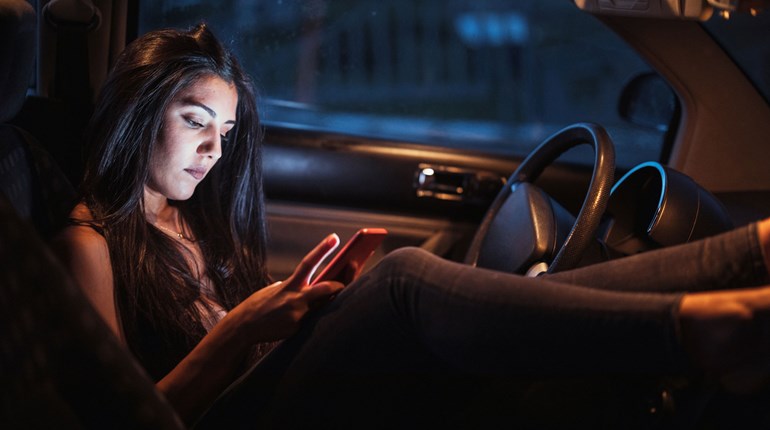
Scenario: It is a bright sunny day and you have just arrived at your local big-box discount store. The parking lot is pretty full, so you have no choice but to park around the middle of the lot, which is not as close to the door as you would prefer. You get out, lock the door and start walking towards the entrance when you notice someone leaning against the building right by the door. You think to yourself, that’s odd, they seem out of place. They are too far away to see facial details, but you can definitely tell they have zeroed in on you, their hips are facing you, you can’t see their hands, and there is no one else around.
Do you continue to walk towards the entrance, which means you are walking towards the threat? Do you turn and head towards the other entrance (you know this store has two entrances). Do you turn around; get back in your car, and leave?
Before we go any further, I would like to introduce you to Edward T. Hall.
Edward T. Hall is a cultural anthropologist that specialized in proxemics that are maintained by healthy, adult, middle-class Americans. He wrote a book called The Hidden Dimension that explains “proxemics” and the difference in “distance awareness” among many cultural groups.
There are several “aspects” of proxemics. The one that Hall writes about is the distance maintained between people when they are communicating. Hall named his four distances public, social, personal and intimate. The Complete Combatant has named their four Reactionary Zones “most amount of time to react,” “some amount of time to react,” “least amount of time to react” and “no amount of time to react.” In Reactionary Zones Part 1, we will be focusing on The Complete Combatant’s “most amount of time to react” distance.
 Per Hall, public distances for normal healthy adults range from 15 to 25 feet. There is no physical contact and very little direct eye contact if at all possible. Public distances like shopping centers, airports, and city sidewalks are all designed to maintain this type of distance. Think about the last time you were in an airport. You have your carry-on luggage; you are walking toward your gate with only one goal in mind… ”I hope I have time to get a coffee before my flight”. Are you looking at every person you pass? Are you smiling and making eye contact or are you minding your own business and just working on going from point A to point B? My guess is that you are not stopping to speak to every person you see, in fact, you are probably avoiding eye contact all together. This is just fine. Public spaces are built wide open so you don’t have to engage.
Per Hall, public distances for normal healthy adults range from 15 to 25 feet. There is no physical contact and very little direct eye contact if at all possible. Public distances like shopping centers, airports, and city sidewalks are all designed to maintain this type of distance. Think about the last time you were in an airport. You have your carry-on luggage; you are walking toward your gate with only one goal in mind… ”I hope I have time to get a coffee before my flight”. Are you looking at every person you pass? Are you smiling and making eye contact or are you minding your own business and just working on going from point A to point B? My guess is that you are not stopping to speak to every person you see, in fact, you are probably avoiding eye contact all together. This is just fine. Public spaces are built wide open so you don’t have to engage.
Because of Hall's framework, we know people can feel the pressure of whether that person belongs in a specific zone/space/distance. In self protection management, we can use his research to our advantage by measuring the violence options available to the bad person while measuring the options available to us to react, act and then respond.
Now let’s switch gears from normal healthy adults, to criminals. We call our furthest distance, which is 25 feet or beyond from you to the bad guy, “most amount of time to react.”
That means you have the most amount of time to react. You have the most amount of time for early warning decisions and decide if you want to walk away or pre-deploy pepper spray, flashlight, etc. You have the most amount of time to gather more information like look at his hands, any movement towards his waist, are his hands hidden, is he targeting you? You have the most amount of time to make this distance “come alive” by changing direction or just leaving the area. If that person changes their direction as well, then you now have an early warning sign and more good decisions must be made!
There are some things to consider in the most time to react distance.
- You don’t want to try to “manage” him. Meaning, you don’t want to yell at him or try to converse with him in any way.
- He has every right to be there…..until he doesn’t.
- Even if it is a sunny day, at that distance, you may not be able to clearly see his face and hands, but you may be able to understand his “body language”.
- At that distance, you are usually not in immediate danger.
- If the bad guy is in shape, he can cover 25 feet in less than two seconds.
- You can use a mid-sized car as a “distance guide”. The average length of a four door sedan is 15 feet. If you can image two sedans parallel parked then you can image 30 feet. That will work as the closest, 25 feet, distance in that zone.
Now back to your scenario. At the most time to react distance, and you see something that is “just not right”, then you should have time to get out of there. Don’t continue forward, which is bringing you closer to him. Don’t go in another entrance (unless you are asking a manager for assistance) because he will probably be waiting by your car when your return from shopping. Please just turn around (keeping an eye on him) and briskly walk back to your car and leave. You can go to another shopping center or return here at another time.
Next month’s article will be focusing Hall’s social distance and The Complete Combatant’s on “some time to react” zone.




































